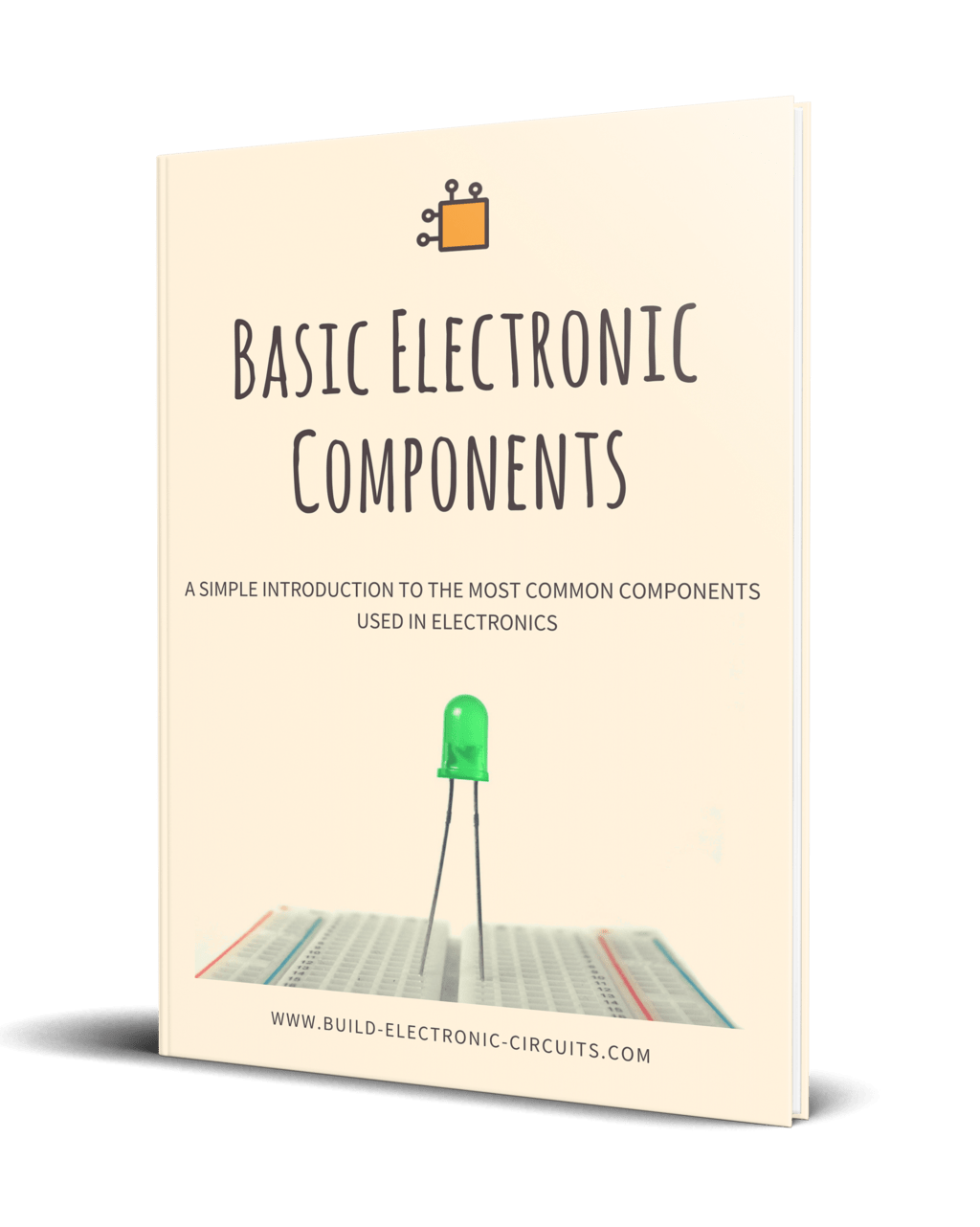But, I’m not an expert.
I know the basics.
But when it comes to more complicated stuff, like heavy derivation and integration, I think I’ve forgotten most of what I learned at the University.
The good thing is:
…you don’t need much math to design electronics!
Just knowing the basics of plus, minus, multiplication and division will take you a long way.
If you know how to find the answer of this expression:
7 / 0.02 = ?

Get Our Basic Electronic Components Guide
Learn how the basic electronic components work so that circuit diagrams will start making sense to you.
…then you got that part covered.
(Hint: Just type it into a calculator)
The next step is to not get scared when there are variables involved:
Vout = Vin * R2 / (R1 + R2)
…and knowing that you just have to replace Vin, R2 and R1 with their values, type it into a calculator — and then you’ll find Vout.
If you also know how to manipulate equations with variables in them, you’ll go even further.
That means being able to go from:
V = I * R
to
I = V / R
Here’s a quick video that shows an example of this kind of math:
https://www.khanacademy.org/math/algebra2/modeling-with-algebra/manipulating-formulas/v/rearrange-formulas-to-isolate-specific-variables
There is of course a lot of advanced math that is useful, for example if you want to design advanced filters or other complex things…
…but you can live happily as a designer of electronics without knowing that stuff too.
Keep On Soldering!
Oyvind
PS! Build your first circuits, including blinking lights, a touch sensor, a synthesizer and more with my ebook Getting Started With Electronics:
https://www.build-electronic-circuits.com/products/ebook-2nd-edition
PPS! Jameco carries the kit for this book here: http://bit.ly/1IvXZoI
More Mail Archive Tutorials

Get Our Basic Electronic Components Guide
Learn how the basic electronic components work so that circuit diagrams will start making sense to you.

